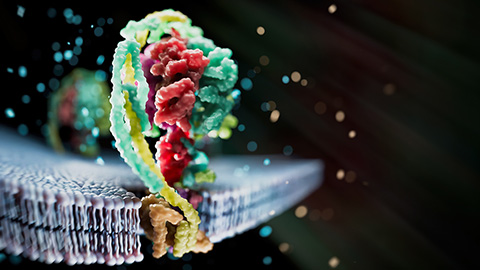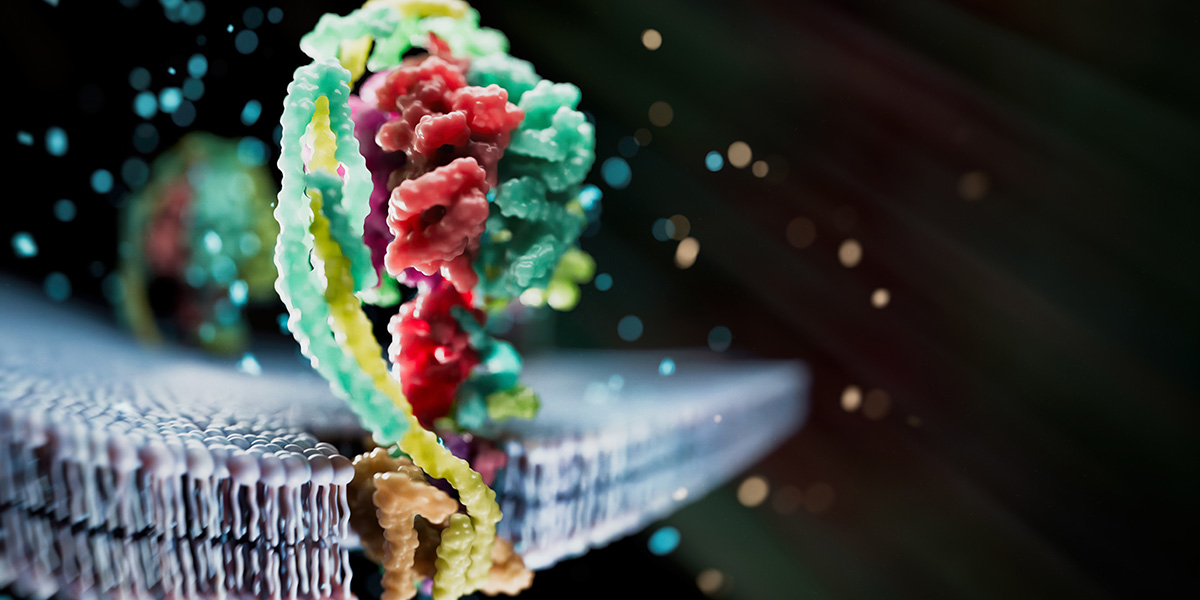Cell function depends on how proteins and lipids are organized in native membranes, but studying those interactions has been difficult. Most approaches require extracting membrane proteins, or MPs, and stabilizing them in detergents that disrupt native interactions.

Illustration of the mitochondrial adenosine triphosphate synthase membrane protein.
In a recent Molecular & Cellular Proteomics article, Wonhyeuk Jung and colleagues at Yale University and the University of Nebraska–Lincoln developed a protocol using supercharger-assisted prequadrupole activation and mass spectrometry. The approach combines collision-induced and electron-capture dissociation to fragment ions and detect proteins directly in intact membranes.
Applying this method to E. coli membranes, the team detected diverse protein complexes preserved in their natural state and demonstrated that the platform can track drug binding to antibiotic targets. They plan to refine the method by adding biochemical interventions to study any membrane protein directly in its native environment.

